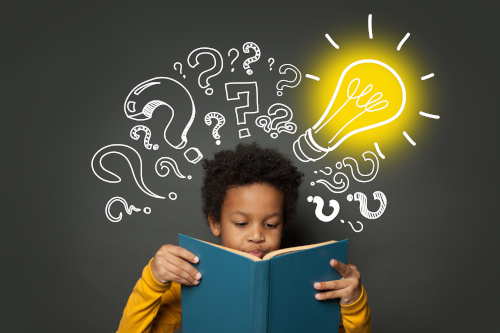James is seeing teachers dedicate more time to phonics and curating collections of decodable text than ever before in her career. And they are seeing gains. “We’re shifting from ‘balanced literacy’ to ‘structured literacy,’” James shared. “It’s not about getting rid of the trade books in the classroom library. It’s just infusing more phonics through decodable texts. Teachers are looking for more decodable texts for students in both the classroom and the school library.”
Heidemann says phonics has always been a part of her reading strategies. “I teach a foundation of phonics infused with fun and humor combined with highly engaging titles,” she said. “That is my best shot at getting kids fluent.”
Rhonda Buck, of RB Books and Media, warns publishers not to just rush to issue a phonics book to respond to these trends. “We must do a better job of accurately leveling books across publishers. Imprints within the same publisher can even look different,” Buck said. “Guided reading levels are subjective. Who’s choosing these levels?”
James and Heidemann encourage teachers to select decodable and guided reading books for their classroom libraries that:
- Are engaging
- Span multiple reading and grade levels
- Reflect the interests of the students in their school community
James says she starts with the basics. “Start with decodables and move to guided reading. You don’t want to introduce a word like pencil in a book for kindergarteners because it has a soft c and you don’t learn that in kindergarten,” James shared.
According to Buck, “Our job is to put engaging, diverse, fun literature into classroom libraries,” she said. “If students are struggling to read, and teachers don’t include realistic reading levels, contemporary formats, and engaging content, do you really think students are going to pick up that book and want to read it? If a fourth-grade student is struggling and picks up a fourth grade leveled book, they’re not going to enjoy it. Classroom libraries cannot just be focused on the grade level they are in.”
Heidemann adds that the role of a book in classroom library is very different than a school library. “When you build a classroom library you need a lot of decodables that kids will burn through. Those don’t really belong in the school library,” according to Heidemann. “I want the content to drive it. If a class is super passionate about dinosaurs, I would want a collection of dinosaur-related read-alouds and decodables that go far above and below your reading level. And we need those less expensive books that are not necessarily library bound.”
As for the debate between print and digital books? James, Heidemann, and Buck all agree there’s a place for both. But Buck says digital is taking the back seat for now. “I’m hearing the same thing from every district I visit. Do not show me technology. Do not show me digital.”
Not because districts don’t believe in technology or understand its place in education, but because they have enough, Buck shared. “They are using technology. They are invested in technology. But they have a massive amount of it. They want print. The districts have purchased so much technology that they’re not using everything they have.”
Are we all suffering from a bit of digital fatigue? According to James, teachers are. “Teachers are burned out on technology. They want those good feelings back of diving in a book together. Print gives you that connection with your students.”
Digital content does still have a significant place in education, however. Heidemann encourages publishers to design digital content that acts as more than a replacement for a print book. “During the pandemic, we saw substitution-level technology,” she said. “We traded print for digital. We had to do it. But when you look at good pedagogy, the substitution level is maybe a starting place in a journey to using technology. We want to be using technology as the best tool to use when there’s no other tool to do it. We want the technology to be transformational. Save the basic skills for things like that tangible book. For students who are struggling to read, learning to track is hard in digital. You swipe one page and you’re lost.”
We can debate phonics, print and digital formats, decodable and guided reading texts, but in the end it’s about high-quality content that reflects the world in which students are growing up.
Buck says, “I want every book to be fabulous. I don’t want a book that my kids read when they were in elementary school. Even the names of children are quite different than they were 20, 30 years ago. When I’m building a classroom library, I want books that look and sound like they were printed in today’s world.”
35 years later, even Cabbage Patch looks a little different.
- 10 reasons we love teachers - May 9, 2023
- 10 reasons we love school librarians - March 13, 2023
- Building culture and community takes more than a committee - February 9, 2023

